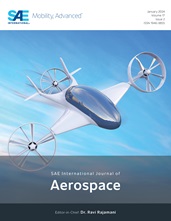From biology, to genetics, and paleontology, these fields share the DNA as a
common and time-proven tool. In science, pressure may be such a
tool, shared by thermodynamics, material science, and astrophysics, but not by
aerodynamics. Pressure is a shorthand for a force acting perpendicular to a
surface. When this surface is reduced to zero, so should the pressure. The wing
area of an aircraft acts as a reference area to calculate its parasite drag
coefficient. In this scenario, the parasite drag acts as a force over the wing
area. If the wing area is reduced to zero, its parasite drag does not, as the
fuselage is still generating parasite drag. The ratio of the parasite drag and
wing area is an example of a pressure construct that uses a physically
irrelevant reference area and has no absolute zero. Pressure
constructs, more frequently used than pressures in
aerodynamics, are a math-based parameter that preserve dimensional propriety
according to the Buckingham Pi theorem but lacks a physical meaning and causes
geometry bias, which may lead to misinformation. This
article discusses the shortcomings of using pressure constructs
in the legacy lift and drag equations, and the benefits of using actual
pressures within the recently introduced aerodynamic
equation of state of engineered and biological flyers.
